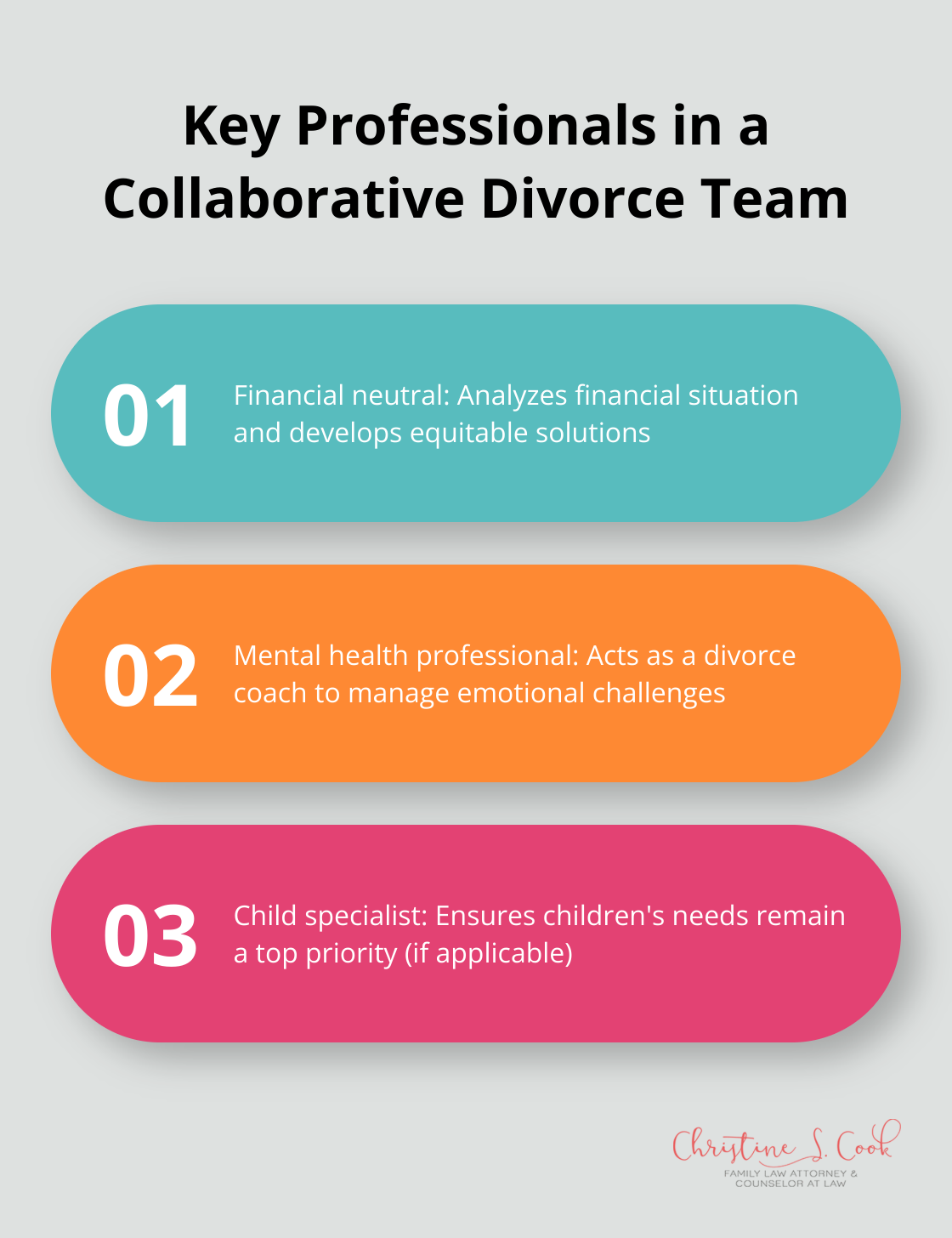At Christine Sue Cook, LLC, we understand that divorce can be a challenging process. However, the collaborative divorce process offers a more amicable and constructive approach.
This method focuses on open communication, problem-solving, and mutual respect between both parties. In this blog post, we’ll guide you through the key steps of the collaborative divorce process, helping you navigate this transition with confidence and clarity.
The collaborative divorce process starts with the selection of a skilled attorney. This professional will guide you through the entire process and ensure your interests are protected. During your initial consultation, the attorney will explain the collaborative approach in detail and assess whether it suits your situation.
A study by the International Academy of Collaborative Professionals reveals that 86% of collaborative divorce cases settled with an agreement on all issues. This high success rate highlights the importance of choosing an attorney with extensive experience in collaborative law techniques.

After you select your attorney, the next step involves assembling a team of professionals to support your case. This team typically includes:

The final step in team formation involves signing the participation agreement. This document outlines the principles of collaborative divorce and requires all parties to work together in good faith. It typically includes a disqualification clause, which prevents your collaborative attorneys from representing you in court if the process fails.
The Florida Academy of Collaborative Professionals reports that 95% of collaborative divorce cases in Florida conclude within one year. This efficiency largely stems from the commitment and cooperation fostered by the participation agreement.

A carefully selected team and a full commitment to the collaborative process create a strong foundation for a smoother, more amicable divorce. The goal extends beyond ending your marriage; it aims to preserve relationships and set the stage for a positive future.
As we move forward, let’s explore how this team works together to gather essential information and set goals for your collaborative divorce process.
The collaborative divorce process demands transparency. Both parties must provide complete financial disclosure, including all assets, debts, income sources, and expenses. This step is fundamental to achieving a fair settlement and equitable distribution of assets.
Financial software tools like Quicken or Mint can help organize your financial information. These tools categorize expenses, track income, and provide a comprehensive overview of your financial situation.
After gathering financial information, both parties work with their attorneys and the divorce coach to identify their priorities and concerns. This step extends beyond financial matters and includes emotional and practical considerations.
Common priorities often include:
The divorce coach plays a vital role in this stage, helping both parties clearly articulate their needs and concerns effectively. They also assist in managing emotions that may arise during discussions.
The final step in this phase involves creating a shared vision for post-divorce life. This doesn’t mean agreeing on everything, but rather finding common ground and understanding each other’s perspectives.
We encourage our clients to think long-term. Consider questions like:
Addressing these questions early creates a more comprehensive and sustainable divorce agreement. This thorough preparation sets the stage for the next phase: negotiation sessions, where you’ll put this groundwork to use in crafting your final agreement.
The collaborative divorce process centers on face-to-face negotiation sessions. These meetings bring together both parties, their attorneys, and other team members to address key issues and craft mutually beneficial solutions.
We establish ground rules to ensure respectful and productive conversations. These rules may include agreements to listen without interruption, focus on interests rather than positions, and maintain a future-oriented perspective.
When children are involved, we prioritize the creation of a comprehensive parenting plan. We focus on developing a schedule that meets the children’s needs while accommodating both parents’ work and lifestyle considerations.
During these sessions, we also address child support calculations, taking into account factors such as income, parenting time, and special needs. Our team often uses specialized software to ensure accurate and fair support determinations.
Financial discussions in collaborative divorce sessions are typically more comprehensive than in traditional divorce proceedings. We work with financial neutrals to analyze assets, debts, and future financial projections for both parties.
Our team employs various strategies to facilitate agreement on property division, including:
Throughout these sessions, we encourage open communication and brainstorming to find solutions that work for both parties. This approach often leads to more satisfying and sustainable agreements than those imposed by a court.
The collaborative divorce process concludes with the creation of a comprehensive settlement agreement. This document reflects all decisions made during negotiations, covering asset division, financial arrangements, and parenting plans. Both parties and their attorneys review the agreement to ensure clarity, fairness, and alignment with previous discussions.
After approval, we prepare and file the necessary court documents to formalize the divorce. This step initiates the legal process to finalize the dissolution of marriage. The collaborative approach often results in a smoother transition to post-divorce life, laying a solid foundation for future interactions (especially important for co-parenting).
At Christine Sue Cook, LLC, we guide clients through every step of the collaborative divorce process. Our team strives to help you navigate this challenging time with dignity and respect. We work to set the stage for a positive future as you begin a new chapter in your life.
